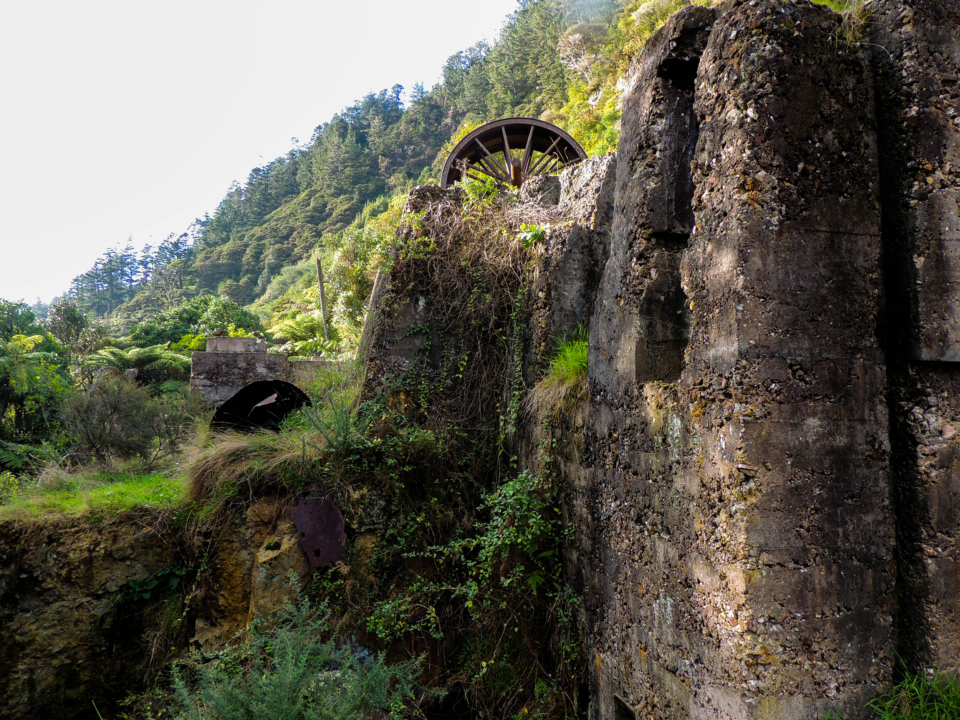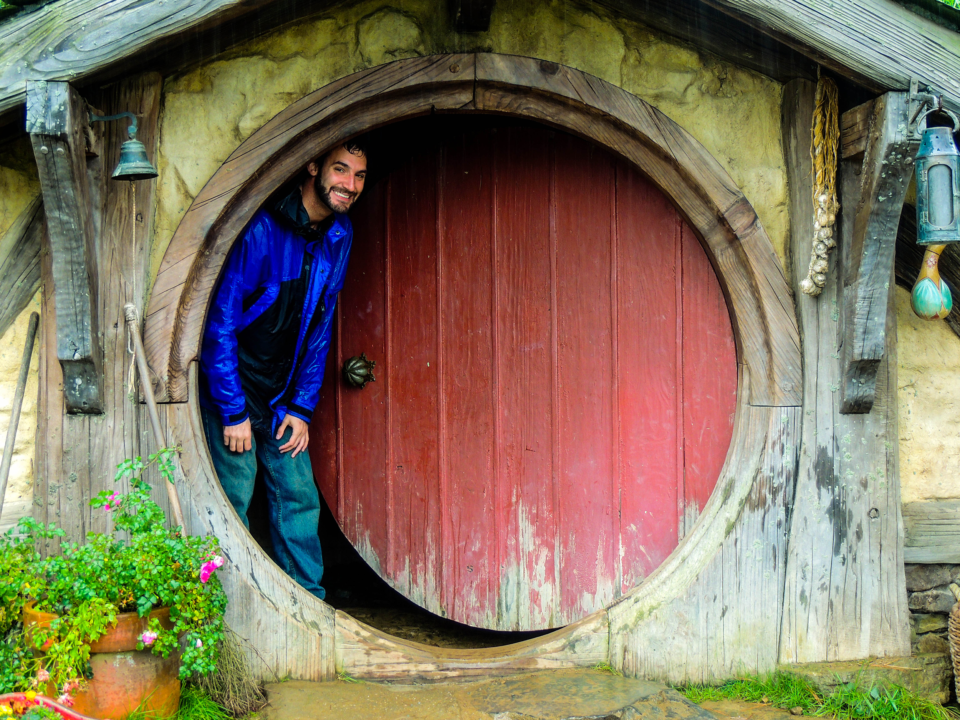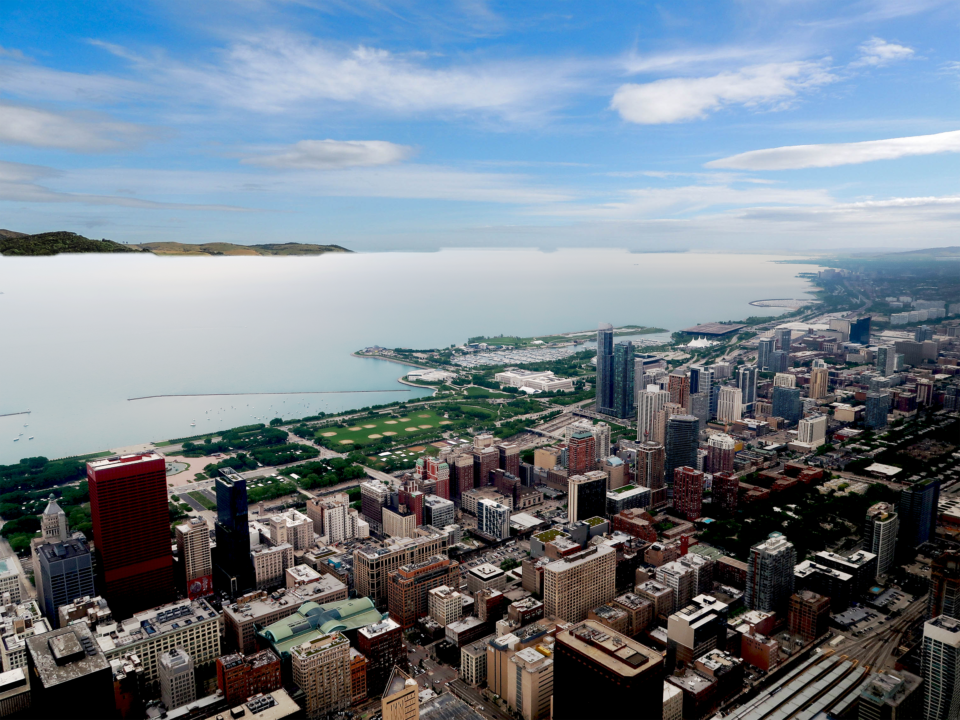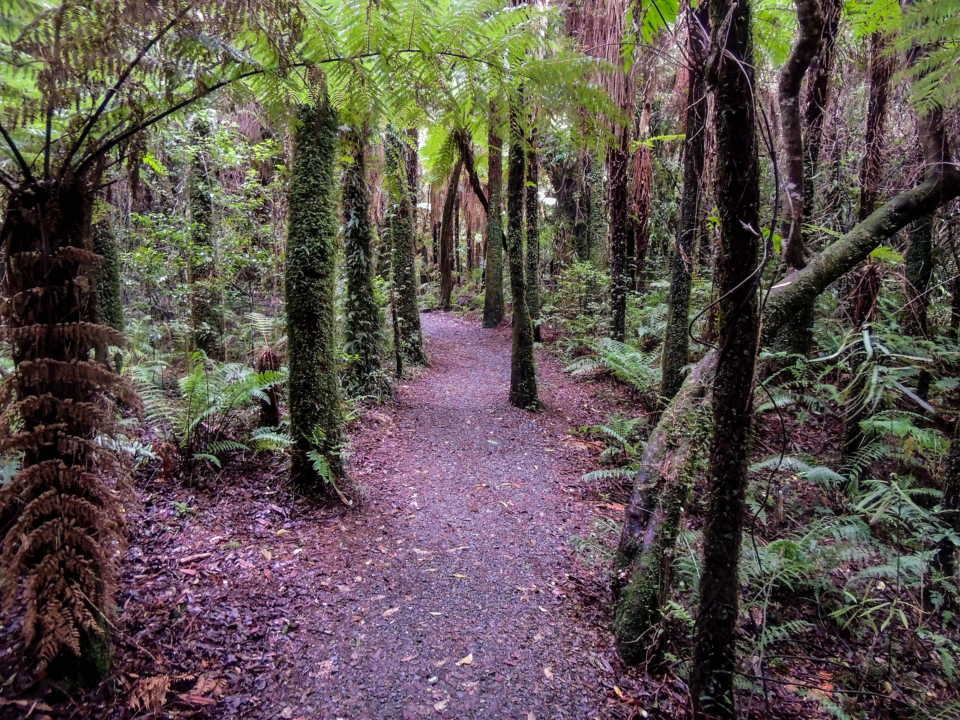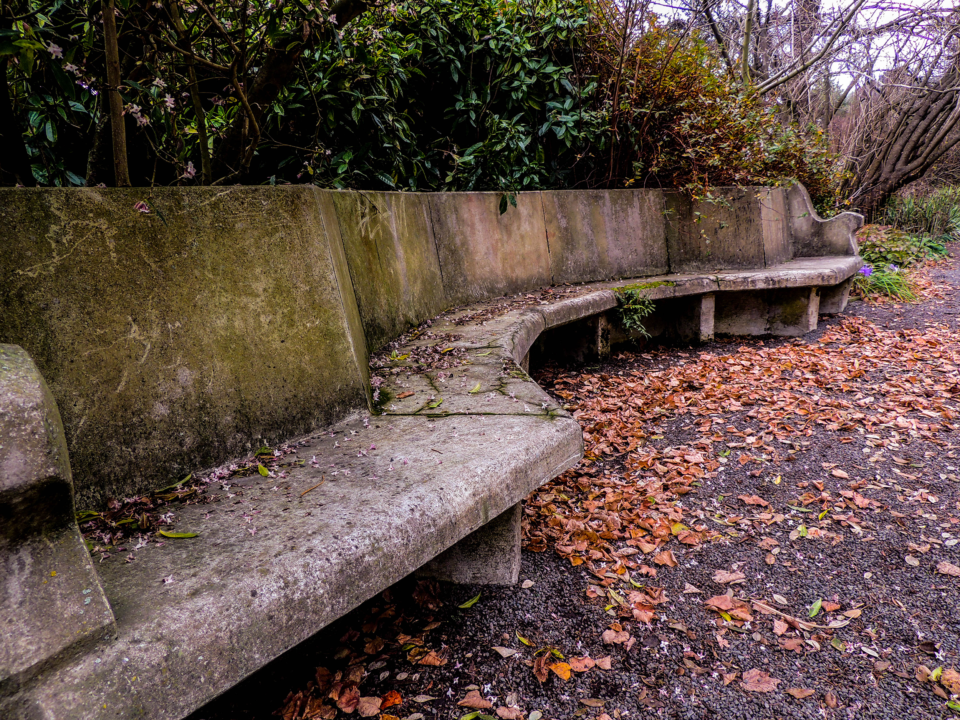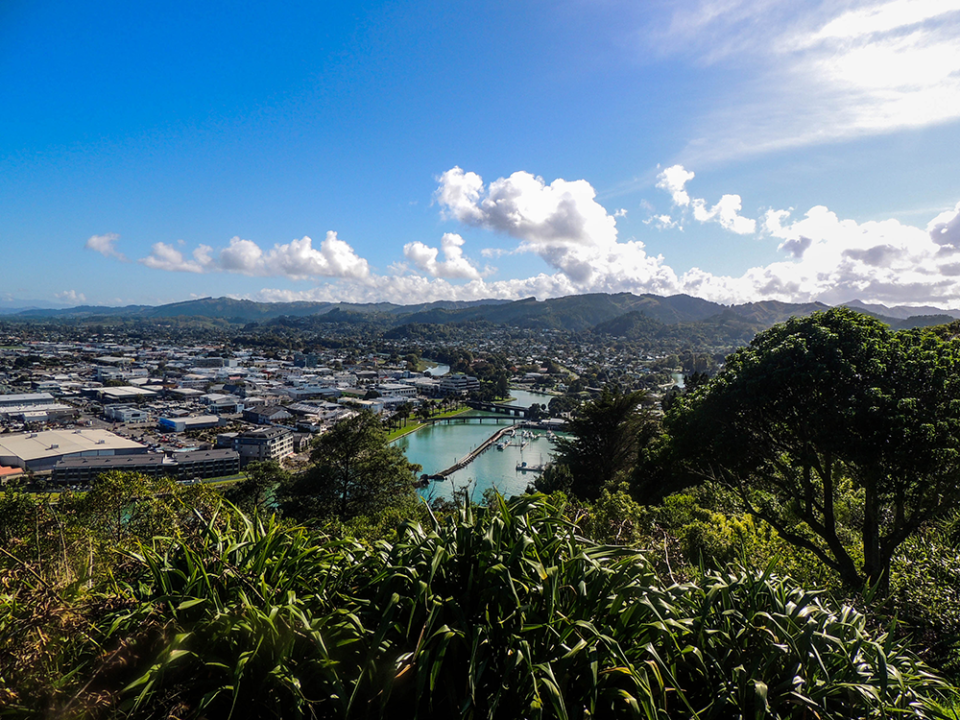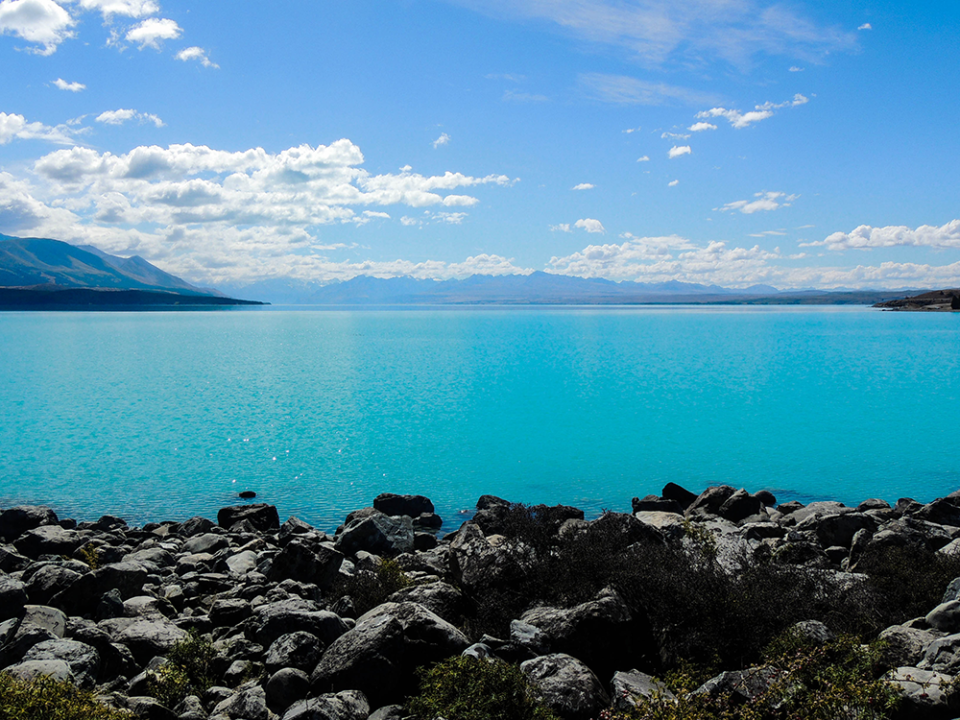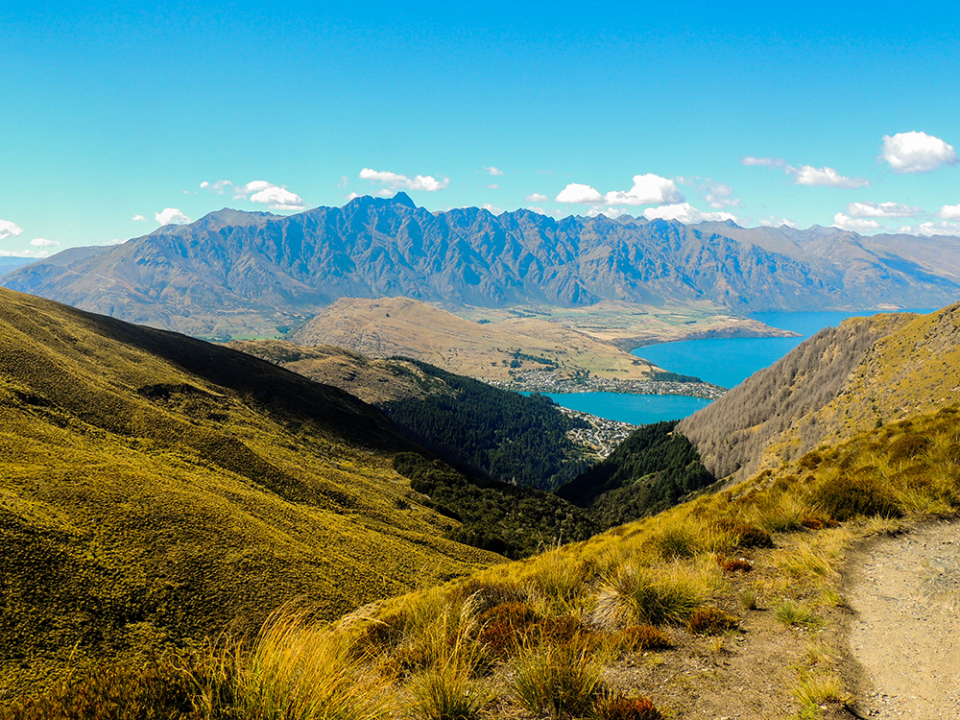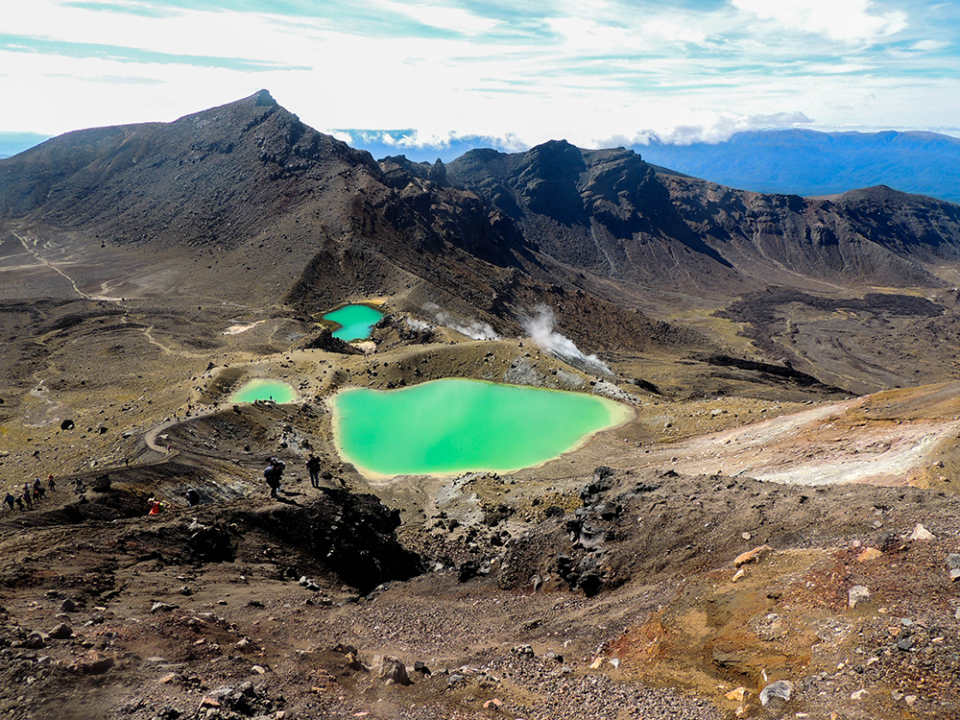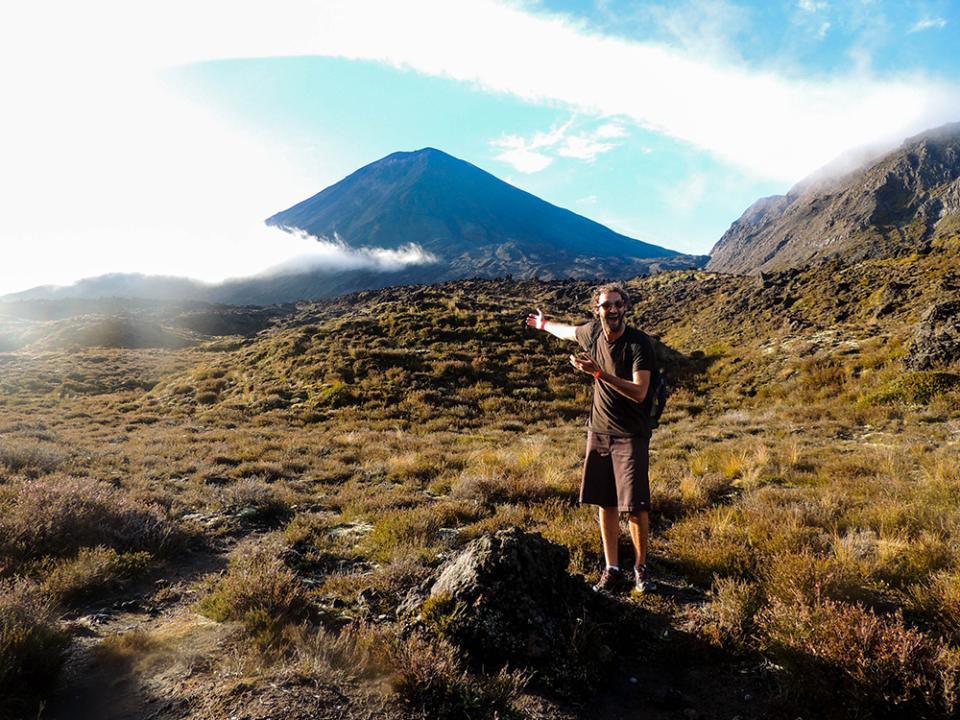How to Get Write On In To Mastering Your Dream World -- Novel Tutorial #3
What is up, writer friends?
I hope this post is out there finding you well, whoever and whenever you.
Yes, I also just made a Dark Towerreference. If you understood that either before or after me saying that, extra points.
Welcome to another episode of Write On In! If this is your first time here, we’re more than halfway through some tutorial videos about getting your novel up and running for National Novel Writing Month.
Even if you’re here outside of the October/November 2020 time frame these are being produced, these techniques are still designed to help you write your book whenever you’re ready or whenever you come across them.
For those of you who do not know, my name is Andrew J. Stillman. I am at the helm of this little writing journey and constructing a book of my own through these tutorials. It's mostly just an example to show you how to put these exercises into use.
There’s also a few topic videos outside of these lengthier tutorials. Feel free to bounce around and check them out!
Today, we’re going to discuss developing your setting!
By now, I hope you’ve at least been introduced to if not already started some development.
Whether your novel is set in a real location or a fictional, we’re going to cover ways of strengthening it. That way, in just two and a half weeks, when National Novel Writing Month officially kicks off, you’re all set to go.
Especially if you’ve stuck with me for these tutorials.
With all that boring beginning stuff out of the way, without further ado, let’s Get Write On In.
So...What Is A Setting?
Simply put, the setting is where your book, or chapter, or scene is physically taking place.
State, town, house, that type of thing.
It also changes scene by scene because it can be a different building, or another room in the house, or any number of physical locations.
Usually some sort of main “location” is determined for the overall setting where your story is going to take place.
Even if you’re writing a fantasy novel where your characters are going out and exploring all of these different terrains or villages or what have you, there’s usually still at least a base for your primary or main characters. Plus, you still have to decide what the world and country they’re in are called.
I’m going to be upfront before we even get any further:
Worldbuilding is my least favorite thing in writing a book. That is also the term usually used for developing your setting in your book, predominately if you are writing fantasy.
You are building your “world.”
Everything within it has to make sense, whether it is made up or not.
Even in a real-world setting, you still need to develop your own use of voice to bring that location to life.
As just stated, I’m not a huge fan of world building, necessary as it is.
Everybody has their pros and cons, their strengths and weaknesses. I feel like I’ve kind of been open about that a little bit so far, but if I haven’t been, I’ll strive to be more so in the future.
Following up on connecting with your inner voice, I think it’s important to determine your strengths and weaknesses. That way, when you do something like develop a book, you already know which areas are going to cause you more of a headache than others.
That might not sound too encouraging, but I honestly think it’s important to determine your shortcomings. Then, you can figure out ways of strengthening them and bringing them up to the same levels as the areas where you excel.
Next week, I'm going to cover dialogue, which will be the first of the writing technique tips.
This will actually be the last "novel-writing" tutorial. We have covered characters, plots and arcs, and now the setting.
And since I’m writing a dark fantasy, I am also going to create a world from scratch.
Hooray.
I am going to talk about some ways of strengthening real-life locations, but if your novel takes place in a legitimate, real-life location — especially if it just so happens to be in a location where you live — then it’s much easier to develop, because you have so much more information already at your disposal.
Truth is, things in your made-up world are also things you should focus on in the real one. More on that in just a minute.
I’m just not looking forward to this one today, so we’re all going to get through this together!
Since not everybody is going to be writing a fantasy story or creating a world from scratch, I will go ahead and cover some techniques for building up your real-live settings first.
These will also work if you’re creating your own world, especially if your book is some sort of “crossover” fantasy, where some or all of your characters either come from or go to the Earth as we know it at some point.
Thus the “cross” over of that genre, when the worlds “cross over” with ours.
Here is the first thing I want you to do, whether your book’s location is real or not:
#1 Think of Your Setting Like a Living Being
Hear me out for a second.
If we think of the word “noun,” and its most basic definition of “person, place, or thing,” we can take the same idea of a noun representing a person — with a history, a personality, and a uniqueness about them that sets them apart — and apply it to the idea of your setting.
This is, truthfully, one of the biggest reasons I chose to travel. That is also why I recommend for every writer, especially those in the fantasy writing genre, to travel, as well.
Traveling doesn’t have to mean some crazy, grand adventure.
It can be something as small as asking yourself something like, “What’s the nearest town I haven’t been to that isn’t more than two or three hours away?”
Then going there.
For the purposes of this video, I am going to assume you have visited at least one other place beside wherever you were born and raised.
If you have not, then I highly recommend you choose the next town thirty minutes over and spend an hour going for a drive there and back.
Wherever you’ve been, just think of one or two places, right now.
What was different about them?
Was one perhaps a city, the other somewhere deep in the forest?
How do the different locations affect the senses?
Perhaps the city is full of noise.
Honking cars, screaming people, lots of construction work, permeated with all the smells from local restaurants, peppered with buildings and houses and life and filled with something of a more frantic and bustling energy?
Pre-Covid, of course.
You then consider the forest setting, which is likely much quieter.
Disrupted only by the occasional chirp of a bird or the rustle of a lizard in the grass. The smells represent the sap within the trees. The pine in its purest scent, the taste of an unpolluted oxygen with a more appreciative relationship with the nature around you?
Were there mountains in these places you’ve visited?
How do you feel being in mountain settings versus more flat?
What do you prefer about where you live, or where you’d like to live?
Are you more of a city dweller or a forest taker?
Why or why not?
Thinking about simple things like that for you in your day to day life help you give your characters similar thoughts with their surroundings.
Not that they consciously need to be aware of those thoughts. It’s one of those things where if you, the author, knows, then you’ll be able to find ways of weaving it into the text.
It’s almost like what you’ll often hear about physical descriptions in characters. Instead of telling me someone has a long blond braid, you could say, “Her golden braid met her belt at her waistline.”
You’ll definitely think of something better to say after the first draft, but we’re only in first draft territory right now.
With your setting, instead of saying, “There were a lot of trees and mountains,” you could say, “He wondered what the trees would whisper if only they could, the tales the mountains would tell as they molded from the quaking earth shaping itself beneath them.”
Not all of your writing needs to necessarily be so “flowery.”
I’m just throwing out these random types of examples that go with “showing” instead of “telling” your story.
#2 Name and Develop One Piece of Setting
Let’s just start with the name of the place, especially if you haven’t done that already.
I showed you in the character naming tutorial this fantasy name generator website. What I meant to say in that video, before the wine, was to use this as a guideline for names. Not to necessarily choose the ones you find.
Up to you.
Like with character names, as well, try and just make them pronounceable.
Let’s talk about the history of these places, then.
You, the author, have full reign over what has happened here, if these places are, in fact, made up.
If you’re working with real, existing places, just read up on your location’s actual history. Think of or choose a story or two that shapes your story in some way, whether directly or just something like, “This tree over here only exists because whatever person founded this land planted it when they claimed it.”
This idea develops some backstory for your location and treats it the same way you would a character.
Go ahead and write out a little history for your main location, with some relations to how it connects with the story.
This also allows you the time to establish or create any rivalries or bad blood that might be crucial for your story.
Think about something like the San Francisco Giants versus the Los Angeles Dodgers.
Maybe that’s just the California boy in me, but me making that establishment also solidifies that characteristic about my personality and how it was partially shaped by where I grew up.
It’ll be the same thing when it comes to your characters.
#3 Determine the Political System(s)
If you’ve rolled your eyes, it’s okay, just relax.
We’re not going to really discuss politics. In your world, it still has to be determined how the “public” functions.
With a real setting, just write in the actual political affiliations as seen in wherever your story takes place.
If you’re writing a fantastical or horror-type story, you can feel free to switch things up.
It’s just important for you to either know or determine how the political system in your location works.
Is it a democracy, or a monarchy?
How does voting work, if that's what people do?
If it’s a monarchy, how has that been established?
If you are making this world up, try and associate with and research as many different political systems as possible. On the flip, but if you’re making things up, just remember that:
You’re making things up, so whatever you say, goes.
This also briefly foreshadows next Tuesday’s topic on imposter syndrome. For the purposes of this post, I just mean that making things up can make you feel like you’re fraudulent because what you’re writing isn’t true.
But.
Yes it is.
Because you say so.
Unless you’re trying to write a nonfiction story about a zombie apocalypse.
Although, 2020’s not over, dude, so maybe you can market it as a premeditated future story or something.
Best of luck.
Go ahead and develop your political system to determine the where and the how of the way things work.
Especially those of you writing some type of “high fantasy” or “medieval type” fantasy, you’re really going to want to know how the “royalty” or whatever works here. Those of you writing fantasy like me are also going to have to figure out how magic works into that.
We’re going to talk about magic last, especially for those of you who are not writing fantasy.
Look here, though, now you’ve got some sort of history and politics set up, good for you!
#4 Figure Out the Religious System
I get it, you guys.
Everyone says the two things you should never discuss are religion and politics.
But we’re making things up here today, so again, whatever you say, goes.
Unless you’re writing some sort of real story, which, by this point, why would you even?
It’s so much more fun to make everything up.
Welcome to why there’s so many fantasy writers.
Like the political systems and history, it’s important to determine what type of religion your people or peoples subscribe to.
It’s also important to note that, despite whatever personal affiliations you have, fantasy books often deal with some sort of idea of a “Creator” or some sort of “karmic force” that represents modern day religions.
Think of something like “The Force” from Star Wars as a film example. Or those of you who have read “Elantris” by Brandon Sanderson.
I’m going to talk about him more in a minute though.
Even if none of your characters or not a single person on the planet you’ve created believes in any type of “God” or agnostic type of thing, it’s still important to determine that.
You may also find, as I did when I was going through all of this, that… I mean, I don’t mean this to sound “blasphemous” but it can feel “God-like” to create worlds like this.
You can take whatever belief of creation you have and think about it when you’re creating your own world.
It’s the same thing we’ve been doing for everything else — blank screen to finished product.
You are merely the CREATOR of the events as they occur.
Okay?
#5: Bonus Tip: Determine the Currency
And how it works within society.
I have a town in here that works on a barter system, and that was a fun thing to do.
Like with everything, challenge yourself to think about “money” from multiple perspectives to determine how the characters react and work with it.
#6: Decide on the Setting's Physicalities
I actually want to share a quick story here that’s something of a travelogue.
I’m sharing it because it’s a story that just helped me at least be aware of my perspective.
We were in North Dakota taking a tour of the capitol building. It was me, my friend, and this couple from Washington that were on the tour with us. Plus, obviously, the tour guide.
About halfway through the tour, the man from the couple made some comment about how flat and boring North Dakota was.
Mind you, having grown up in Yosemite, I am definitely used to some mountain surroundings.
The tour guide, however, said, “You know, I’ve grown up on The Great Plains my whole life, and to me they’ve always represented freedom, because there’s no borders. Just wide open plains, far as the eye can see, like looking out at the ocean. But when I went over toward the west and went to the Rockies, the mountains made me feel so closed, so trapped, and so claustrophobic.”
It shook me.
It still kind of does.
I totally thought North Dakota was boring, I mean The Great Plains really are just… plains as far as the eye can see. It was eye-opening all the same in the aspect of how it affected my writing and the way that I approached characters, setting, and their relationship with each other.
One person thinks a field is boring, another thinks it represents freedom.
One person thinks a mountain range is the most incredible thing in the world, another thinks it represents oppression.
Just think about that when you’re approaching your characters and your setting. This goes back to “showing” your location through the perspective of your character.
#7 Develop a Magic System
This is for either fantasy writers or just those who are simply curious about how to do it. This can be simple, or extreme, depending on what you’re working with.
My first recommendation is to read essentially any Brandon Sanderson.
Warbreaker and Elantris, in particular, are good choices for standalone books that also represent good magic systems.
Warbreaker especially sees us looking at the use of color as a magic system. I am part of the group of readers who thinks he needs to continue that series.
That’s not what this is about, but Brandon has his advice on developing magic systems — and world building — on YouTube and his website.
To quickly state what his three laws are:
“1. An author’s ability to solve conflict with magic is DIRECTLY PROPORTIONAL to how well the reader understands said magic.”
Essentially, you can’t just get a character out of a bind “because of magic.”
It can’t be an excuse, it has to be a system the reader already understands.
Most people will probably immediately associate this idea with Harry Potter.
“2. Limitations are greater than Powers.”
Basically, don’t make people invincible just because of their magic. Even a character who thinks they’re indestructible still has to have a flaw.
As with Sanderson’s example on his website, think of Superman and kryptonite.
The limitations are what keep readers enticed. They’re what the writer sets in place to keep the drama and intrigue going.
“3. Expand what you have before you add something new.”
Don’t just keep making stuff up, make more work for what you already have.
These have just become really common examples of how to build magic systems. That is one of Brandon’s biggest strengths and what he’s kind of known for.
He’s not the only example, of course. I wanted to include the development of magic with the development of your setting because of how the magic interacts with the people in whatever your version of “modern day society” is.
Like with religions, different people can have different opinions on magic and magical systems. Perhaps your characters need to work in secret. Perhaps magic is very predominant and there’s something of a caste system set up based on magical ability.
Whatever it is, you need to figure it out.
Make it up.
Just make it make sense.
And ska-boom.
Two weeks into October and you already have your novel on its way!
Spend some time revisiting these exercises once or twice just to get everything polished up when you start your manuscript.
If you’re getting the itch to start, try and ride that out until November starts. By then, it’ll have no choice but to pour out of you.
Or, if you’re feeling really brave and you already know your book will be more than 50,000 words, maybe you can write out a chapter or two just to get into the habit of it.
You can also officially “announce” your book on the National Novel Writing Website. If you haven’t done so, be sure to sign up for that if you’re participating.
If you have any questions, as always, please feel free to ask in the comments.
Just remember: We’re still in first draft stages.
If the things we’re covering in these tutorials seem too stressful, try and just write out at least one or two bullet points for everything to get yourself started.
After you write out the first draft — or maybe once you simply get started with it — you’ll find it easier to revisit these exercises because you’ve have more of an idea as to how it actually goes down in your book.
I’m so excited for you to be taking this journey! I hope you’re all gearing up to Write On In!
I’m getting antsy myself.
It’s almost like waiting for Christmas.
Tuesday we’re going to talk about how to survive imposter’s syndrome if you’re just feeling like you don’t “deserve” to write a book.
Enjoy your world building in the meantime.
*** My Settings Developed In This Video/Through These Exercises**
Laniswell Hollow -- Where the Main Characters are Trapped -- Setting Sketch
Underneath Raelevarre
Role in Story
Main location — cave beneath the big city.
Related Characters
All characters.
Season
Unknown
Unique Features
Rocky terrain, jagged stones jutting out of the ground and coming from the tops. Some places are wide and open, some feel like teeth coming in to claim a victim. Everything is slimy as water drips down it all, but the water leaves behind a residue that’s fatal if ingested. This makes touching things difficult, because sterilization must take place before any food or face touching or anything of the like can happen.
The halls of the cave stretch underneath the entire city and lead into other ones, but that only adds to the lost feeling. There is no light, no one can see each other, and the only escape comes from those above deciding on who they want to free — but that freedom usually comes with a stronger cost of slavery.
Countless bodies are strewn throughout the halls of this cave, and their rotted bodies add to the fetid smell that permeates everywhere. There is no hope in these caves. Even those who “survive” them only go on to find an even darker life, despite their ability to see what’s around them.
For our main character, the lack of ability to see is the biggest driving force for him. Unlike the others, he does not lose hope, nor does he rely only on what his eyes tell him. It is his intuitiveness and his connection with his other senses that ultimately allows him to save everybody.
Description
For people considered “untouchables.” They are thrown into these caves to be forgotten about. It is usually because they have some sort of power that is feared by the rich in Raelevarre. Magic is feared because it is greater than the monetary values the city leaders worship.
These caves have existed for centuries as something of a public elephant in the room. Everyone knows about them in the entire country of Thedua, but it is the only city in the country, within the only country in the world of Kadiux, that allows this to happen.
Nothing can stop it, however. The wealthy court in Raelevarre holds enough power of their own to carry it forward, and everybody else just fears getting thrown away. Further revelations to be revealed as the story is examined.
Sights
Lucky if you can find any. Vaeda, however, is able to make out the shapes of the caves as they wander around them. He must connect with his own inner voice and intuition to make this happen. Sometimes, he is wrong, and that leads them astray. Outside of the darkness, Vaeda is certain that the caves would be a wonder to gaze upon. A natural puzzle, a labyrinth designed by the world, meant to be solved. A riddle, indeed.
Sounds
Mainly dripping water, or people screaming if you’re lucky enough to encounter any. There’s also the guards and monsters sent by the king to try and wipe out the Dalits at any given moment. Vaeda must rely on the sounds to guide him. He starts to learn how to hear the presence of rocky outbursts, the breath of nature aiding in his quest. The more he relies on his ears, the more thorough his search through the caves.
Smell
Mostly rotting flesh. There should be smells of food, as there is above them, but food is hard to come by down here. Further explanation of how it is discovered needed at this pointed.
Notes
The whole purpose is trying to find the light within the darkness.
RAELEVARRE
Thedua — Main Country
BASED ON HINDU CASTE SYSTEM/AMERICAN POLITICS
CHARACTERS INFLUENCED BY DALITS
BASED ON HINDUISM
Role in Story
Capital of Thedua
Related Characters
The king and anybody from the court that interacts in the cave
Season
Autumn
Unique Features
Visually stunning. The people who run this city — and, in turn, the country — have an eye for flashy material. They worship gold, monetary value, and beauty. The buildings represent the exorbitant obsession, and the leaders fear anything in the realm of creativity.
Unless, of course, they can profit from it.
Description
Rooted in tradition, Raelevarre is a city unparalleled by any other in Kadiux (the world). The rulers here are merchants, scholars, and nobles fit for the finest, most lavish things in life. They are not subject to decay, they do not bother themselves with life forms they consider lower than them, and they maintain that they are the strongest city in existence.
But their biggest secrets lie within the caves beneath them, the labyrinthine halls that, for years, have held the lowest of society, not only from Raelevarre, but from all regions in Thedua. The untouchables, they are called, are thrown into the pits beneath the city, exiled and forgotten, to be used only as slaves whenever the royal court of Raelevarre decides they are worthy.
Nobody outside of those captured or those in the highest nobility know about these caves, and anyone who’s ever managed to escape finds their accusations ignored. The caves underneath Raelevarre — known as the Laniswell Hollows to those who have been unfortunate enough to experience them — remain the city’s biggest and longest running secret. What the inhabitants of the rest of the world don’t know, or at least don’t understand, is that the people who are trapped and held prisoner within these caves actually threaten the rest of the world. Most of them contain some sort of ability that could harm or hinder those in the general population, and although the execution behind the imprisonment is cruel, the idea is meant to save and uphold the citizens.
Sights
What is not to see here in this most wondrous of cities? Most visitors readily ignore the rumors of Raelevarre once they experience it for themselves. From the rolling mountains, some meeting into jagged seismographs across the skyline, to the expansive views of the ocean connected to its bay, to its sparkling buildings, there is never a dull moment in this city. Above the sinister heart running the thing, it is a city that sees more life than any other in the world.
Sounds
Perhaps you’ll hear music. Or the sizzle of a pig roasting on a spit outside of a restaurant. Maybe you’ll come across a lover’s spat, or an impassioned speech by a local politician. You may hear beggars pleading for assistance, their dirty clothes and bodies an eyesore amongst the clean image represented by the materials surrounding them.
Or, perhaps, if you’re lucky, maybe you won’t hear a thing.
Smell
Depends on the street, but the closer you are to the capital building, the better the smells get. Outside of the sewer pit, that is, but even the random whiffs of that act as a reminder that, beautiful as some things may be, it’s all just full of shit at the end of the day.
The food in Raelevarre, however, is world-renowned. They are known for creating many dishes, but more exploration of that will occur throughout the writing.
Notes
My best attempt at neutrally examining the American political system.
HARDMOURE
Town in Thedua
Role in Story
Home of Vaeda, the main character, and Go’Ranashu
Related Characters
Vaeda and Go’Ranashu
Season
The memories that we see from here between Vaeda and Go’Ranashu showcase some summer and winter times.
Unique Features
Hardmoure is most noted for its natural beauty. It is small in population, because life is hard out in the mountain ranges, but it has a high tourism population. Most people come visit here for getaway and escape — which makes living in a cave somewhat easier for our characters, who know what it means to live alone in an active world.
Description
Along the ocean, but full of mountains. Lots of hikes and places to retreat from society and connect with nature.
Sights
Lots of trees, great beaches and ocean views. There’s still things for visitors to experience, lodging and restaurants and that, but its main focus is serenity, peace, and retreat from the busy life.
Sounds
The occasional chirp of a bird. The rustle of a lizard in the grass. Sporadic conversation that may or may not occur, depending on if any interaction is had. It isn’t that nobody exists, it’s just that… they’re rare, and it’s easy to avoid them.
Smell
Dirt, which is especially pungent when it rains. Sap from the trees. Pollen from the flowers.
Notes
It’s basically a mixture of Monterey/Big Sur where I currently live, and Oakhurst/Yosemite, where I’m from.
NAIKAX
Terrain in Kadiux
Role in Story
Homeplace of Runavan
Related Characters
Runavan
Season
We never see Naikax
Unique Features
It is known for being the center of faith in Kadiux. The people are notably the most kind and helpful of any.
Description
Placed in a valley. There are mountains and ranges off in the terrain, but it is mostly flat and empty. Also very windy and has some of the most extreme weather in the country.
Sights
There are a lot of cool underground things, like lighted caves and rocky ravines, but to the naked eye, it doesn’t look like much of anything.
Sounds
Mostly just beggars.
Smell
Sometimes it’s best not to put a name to it.
Notes
Basically Fresno meets the midwest.
VALEFUL
City in Theduen
Role in Story
Hometown of Surid
Related Characters
Surid
Season
Always associated with winter
Unique Features
Frequently snow-capped mountains among city features.
Description
Right behind Raelevarre in obsession with flashy and material, but also blends with Naikax with the faith. They’re also not as abrasive as the people of Raelevarre.
Sights
Basically the same as Raelevarre. With its own unique flair and no ocean views.
Sounds
Same as above.
Smell
Same as above.
Notes
It’s like comparing San Francisco to Los Angeles
ZELSURIA
Town in Theduen
Role in Story
Hometown of Cochava
Related Characters
Cochava
Season
We never see it
Unique Features
A place where magic is accepted.
Description
People often say they feel like this town puts them under a spell. Cochava feels the same. She also feels like that magic has followed her in life.
Sights
Some say it looks exactly as you want it to look.
Sounds
Some say it sounds whatever brings your ears the most harmonious melody.
Smell
Your favorite meal. Or so they say, anyway.
Notes
It’ll need more development, obviously, within the actual text. I just think it’s cool to have an idea of a “mystical” town and how that would shape the character who is from it.
THEDUEN
Main Country
Role in Story
The country where the story takes place
Related Characters
Everybody
Season
All of them
Unique Features
It has every landscape.
Description
It’ll need more development as the story progresses. It’s more about the individual places.
It is important to know that Hindu and Christian influences make up the religion, and English and American politics influence the political system. Gold and shiny objects catch most interest, but "money" is different.
Sights
All of them.
Sounds
All of them
Smell
All of them
Notes
One of seven countries in the world
KADIUX
The World
Role in Story
It is the world. It is everything.
Related Characters
Anybody who breathes its oxygen.
Season
It creates the seasons.
Unique Features
It creates originality.
Description
It is everything that exists.
Sights
Every sight from every country.
Sounds
Every smell from every country.
Smell
Every smell from every country.
Notes
It is whatever world I decide for it to be.
That will, of course, be changed as I write it out.


